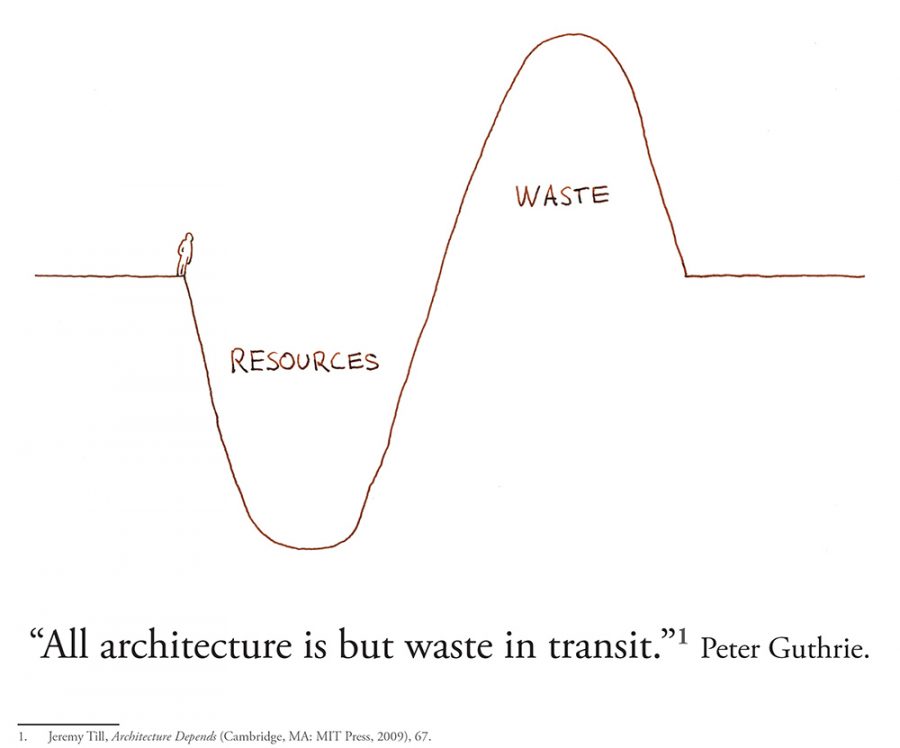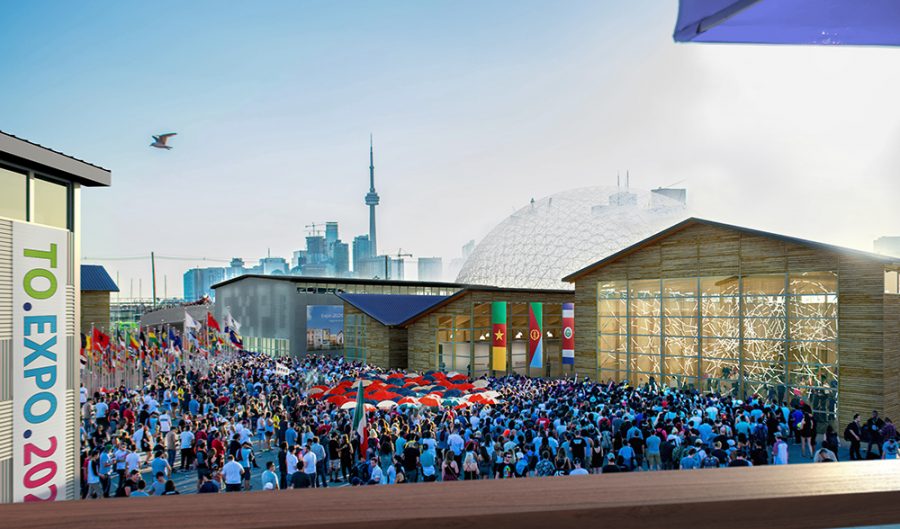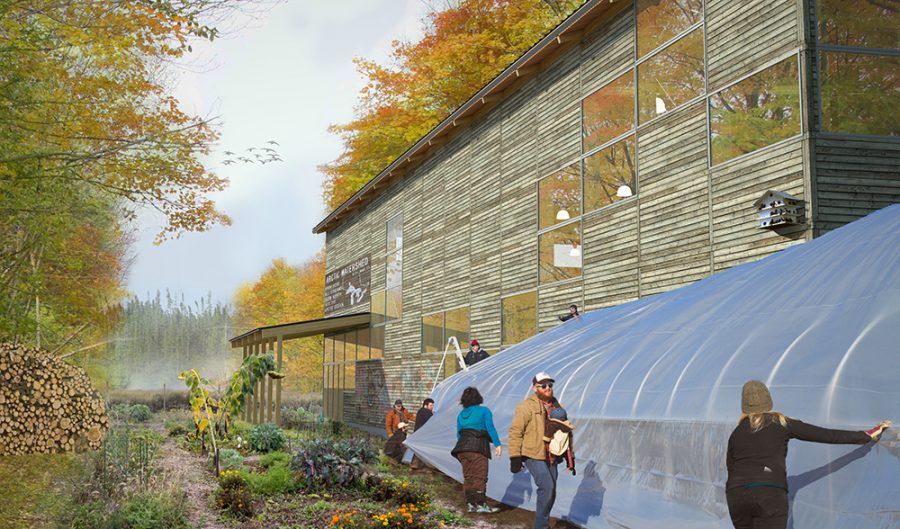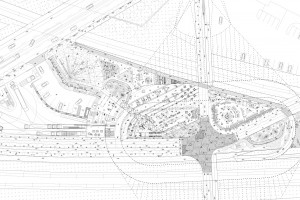
Reconstruction Site
Re-designing the disposable Expo
Scott Proudfoot
Building, supported by the practice of architecture, is churning resources into waste at an alarming rate. Our method of construction has its inevitable conclusion in a pile of rubble. Lamentably, the natural resources we build with are finite, and our exploitation of these has nearly reached its peak. As humanity strives for a renewable energy future, architecture must engage in the renewable use of materials.
In the long term future, architects need to design buildings so their materials can be recovered, refurbished and reused. Principles for designing in circular life cycles were laid out by McDonough and Braungart in their 2002 book, Cradle to Cradle.[1] In more than a decade since the book was published, there is little evidence that the process of architecture has changed to support design for disassembly and the reuse of materials. This thesis aims to outline a method of design for material reuse that supports a healthy circular flow of material life, death and rebirth.
World Expositions have become the epitome of disposable architecture, with renowned architects designing pavilions with an intended life span of six months. This thesis proposes a transformation of the Expo type from an endgame of waste to one of reuse. A contemplated Expo Toronto in 2025 provides the opportunity to reclaim a reputation for showcasing the future. The proposed brief for such an Expo challenges countries to exhibit stories of regeneration in an event built on the theme of reuse and recycling. The Expo is an ideal venue for the design of prototype pavilions assembled out of renewable and reusable materials. This thesis proposes two pavilion types, which at the Expo’s conclusion will be immediately reused in communities across Canada. The first type is designed to be entirely recycled when it is no longer needed. The second pavilion type is assembled of material which can be composted, returning nutrients to the soil. The resulting buildings will be adaptable to change, reusable in parts, and return their materials to circular flows at end of life.
[1]. William McDonough and Michael Braungart, Cradle to Cradle : Remaking the Way We Make Things (New York: North Point Press, 2002), 166.Terri Boake, University of Waterloo
Committee Members
Val Rynnimeri, University of Waterloo
Paul Dowsett, Sustainable .TO
The Defence Examination will take place:
Thursday January 5, 2017



Sean Maciel is a graduate of UWSA.




Leave a Reply